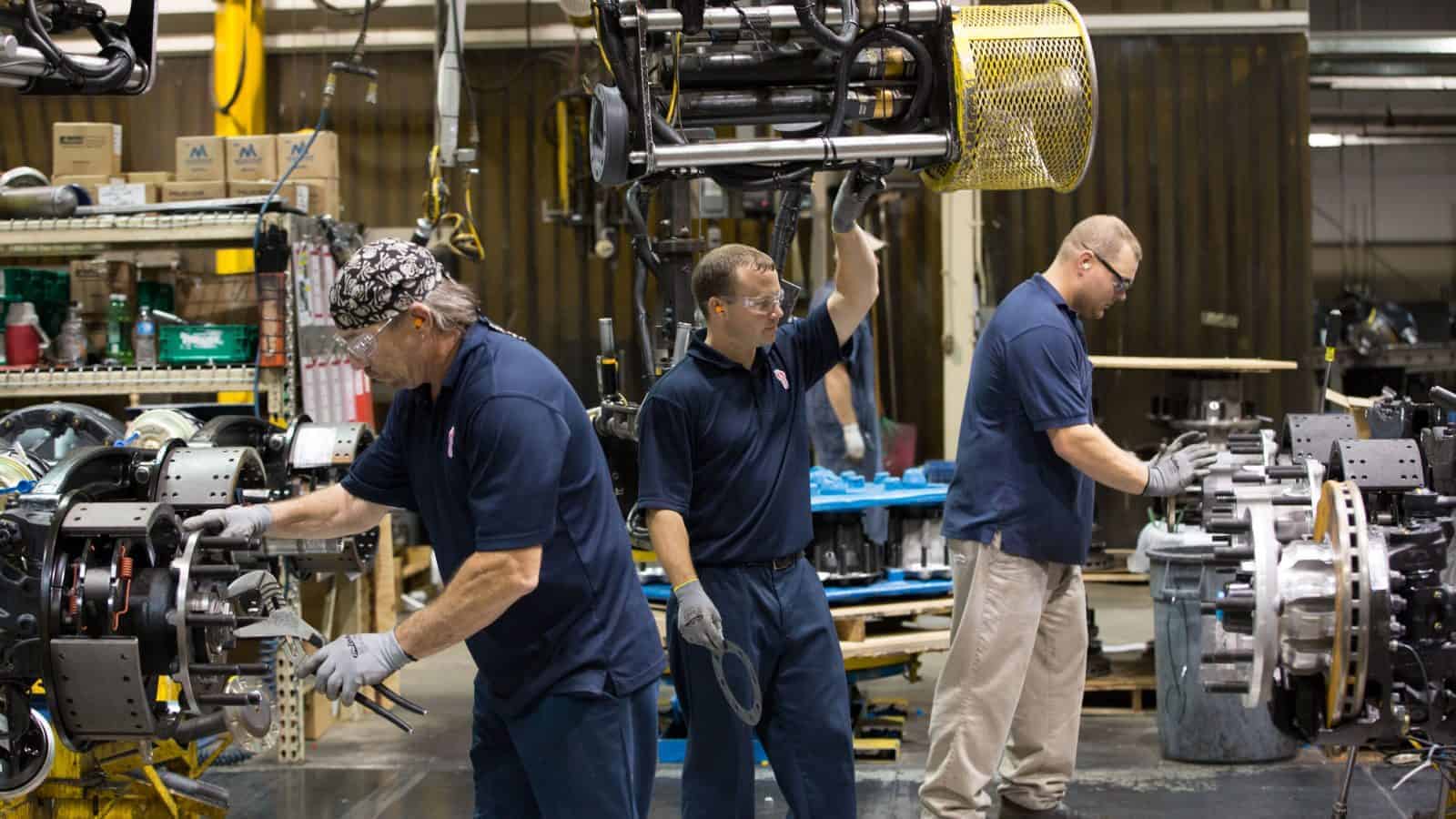How Manufacturers Are Investing in Their Future Workforce
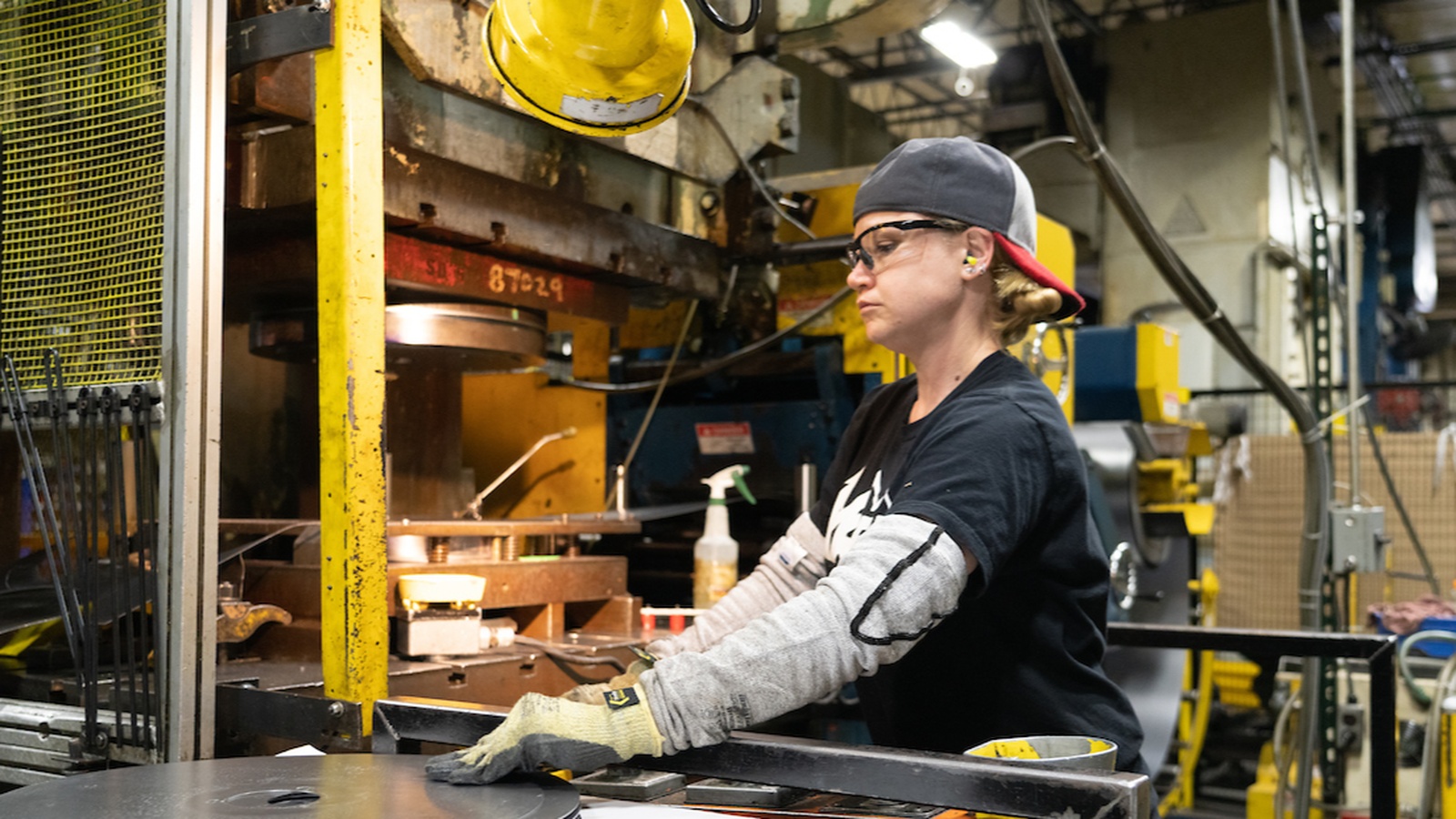
How are manufacturers developing a workforce for a fast-changing industry in a fast-changing decade? Recently, Manufacturing Institute President Carolyn Lee sat down with leaders at Union Pacific Railroad and the Caterpillar Foundation to find out.
Union Pacific Senior Vice President of Corporate Relations and Chief Administrative Officer Scott Moore discussed his company’s efforts to recruit more women and young people to the manufacturing industry. Caterpillar Foundation President Asha Varghese weighed in on Caterpillar Foundation’s efforts to support training opportunities for the military community and introduce high school students to innovative manufacturing careers.
What Union Pacific is up to: The Union Pacific and MI partnership is centered around a program called Careers on Track. This three-year, $3 million initiative is aimed at changing perceptions of the rail industry and encouraging women and youth to pursue careers in the field.
- As part of Careers on Track, Union Pacific and the MI developed Future Creators, a digital STEM curriculum focused on transportation, distribution and logistics.
- Future Creators has been used in more than 24,000 middle schools across the country with 80% of students increasing their knowledge of STEM careers.
How they’re doing it: The MI and Union Pacific created a 3D digital experience of a Union Pacific yard and locomotive that is designed to help women and young people explore technical fields interactively.
- Their other outreach efforts include 30-second PSA-style videos that showcase female employees and their stories to highlight career paths at Union Pacific and events hosted through the MI’s STEP Women’s Initiative.
- Union Pacific has reached more than 250,000 women through this content, demonstrating what women just like them can achieve in the manufacturing industry.
Union Pacific says: “We’ve always known diversity is key at Union Pacific, and to achieve that, there are deliberate things we need to do,” said Moore. “We’re going to have to reach people. Around 90% of our workforce is union, primarily in the field, across 23 states and 7,000 communities. We have to get in those communities—and The Manufacturing Institute gave us the tools to do that well.”
What Caterpillar is doing: The Caterpillar Foundation’s partnership with the MI is investing in workforce readiness and building an empowered and skilled manufacturing workforce.
- This partnership is expanding the MI’s Heroes MAKE America program, which provides certification and career-readiness training to transitioning service members, veterans, military spouses and others who work in or with the armed services.
- One of the partnership’s first efforts was to create a fully virtual program to further Heroes’ reach regardless of physical location.
- The first 100% virtual Certified Production Technician training program was launched in late 2021, in partnership with Texas State Technical College and TRANSFRVR.
In addition, the Caterpillar Foundation is also working with the MI’s FAME program—a 21-month apprenticeship program founded by Toyota that grants certifications and prepares young people for high-skilled jobs in the manufacturing workforce.
- Most recently, the MI and the Caterpillar Foundation created a new FAME chapter in Seguin, Texas.
Caterpillar says: “Caterpillar Foundation focuses on resilient communities, and we understand the importance of investing in local communities in order to ensure that we’re providing them with the right resources, with the right services and with the right skills for employability,” said Varghese. “What really attracted us to the MI is first and foremost that strategic alignment…focusing on that untapped talent.”
The last word: “As a nonprofit, the MI depends on the investments of corporate and philanthropic leaders to tackle the workforce crisis in manufacturing with innovative, exciting workforce solutions,” said Lee. “The MI’s work has expanded to include a full collection of initiatives that not only train individuals for rewarding careers but also provide the thought leadership, best practices and learning networks that manufacturers need to address their workforce issues.”
Manufacturers Unveil Landmark Campaign to Close Gender Gap in Workforce
The Manufacturing Institute Launches “35x30” Initiative to Add 500,000 Women to Manufacturing Workforce by 2030
WASHINGTON, D.C. – The Manufacturing Institute, the workforce development and education partner of the National Association of Manufacturers, announced their “35×30” Women’s campaign, an ambitious, industry-wide effort to close the gender gap in manufacturing.
By 2030, the “35×30” campaign will work to close the skills and talent gap in manufacturing by adding half a million women to the industry, increasing women’s representation in manufacturing from 29% today to 35%. The campaign will also lead a nationwide movement designed to change perceptions by engaging face-to-face with emerging leaders and young women students, leveraging more than 1,000 women mentors and collaborating with manufacturers on strategies to attract and retain female talent and broaden the pipeline by supporting women throughout their education.
“For nine months in a row now, manufacturers have had more 800,000 open jobs, and we can’t make meaningful progress toward filling those jobs without closing the gender gap,” said MI President Carolyn Lee. “The 35×30 campaign is an unprecedented plan to strengthen our workforce and build the talent pipeline. We are thrilled to see the industry unite and recognize the power of women in the workforce. This initiative will help many women of all ages find their way into a successful, rewarding career in modern manufacturing, and I can think of no better day to make this announcement than on International Women’s Day.”
The biggest challenge facing manufacturers continues to be the growing workforce crisis. Studies show that manufacturers can close the skills gap by 50% by bringing 10% more women into the industry. Women account for about half of the U.S. labor force but represent less than one-third of the manufacturing workforce.
As part of the campaign, the MI announced an initial sponsorship of $250,000 from Arconic Foundation to support programs and activities in 2022 and beyond. The MI also recognized Stewards of the “35×30” campaign, stressing their support in narrowing the gender gap facing manufacturing in America.“35×30” Campaign Stewards include:
- Ryan Kish, President and Treasurer, Arconic Foundation
- Dee Dee Fultz, GM of Assembly, Harley-Davidson Motor Company
- Erika Peterman, Senior Vice President, Chemical Intermediates, North America, BASF
- Courtney Silver, President, Ketchie Inc
- Keira Lombardo, Chief Administrative Officer, Smithfield Foods
The “35×30” campaign will add to the MI’s ongoing work to bring women into the manufacturing workforce. Launched in 2012, the STEP Women’s Initiative is the nation’s marquee program to close the gender gap in manufacturing. STEP consists of the STEP Ahead Awards and professional leadership development program as well as regional STEP Forward events throughout the year. The initiative works to foster a 21st-century manufacturing workforce by elevating and inspiring women in the manufacturing industry through recognition, research and leadership, as well as by motivating alumnae to pay it forward by mentoring the next generation. Click here to learn more about the “35 x 30” campaign.
-The MI-
The MI grows and supports the manufacturing industry’s skilled workers for the advancement of modern manufacturing. The MI’s diverse initiatives support all workers in America, including women, veterans and students, through skills training programs, community building and the advancement of their career in manufacturing. As the workforce development and education partner of the NAM, the MI is a trusted adviser to manufacturers, equipping them with resources necessary to solve the industry’s toughest challenges. For more information on the MI, please visit www.themanufacturinginstitute.org.
2022 STEP Ahead Award Winners Announced

Word is out – the recipients of this year’s STEP Ahead Awards have been announced.
What’s happening: Bestowed each year by the Manufacturing Institute, the NAM’s workforce development partner, the STEP Ahead Awards recognize outstanding women in the fields of science, technology, engineering and production (STEP). This year marks the honor’s 10th anniversary.
Why it matters: “The STEP Ahead Awards are central to the industry’s efforts to recognize and empower women,” said MI President Carolyn Lee. “Manufacturing is averaging more than 800,000 open jobs a month in the past year, and we can’t close that gap without closing the gender gap.”
- Recipients “serve as role models and have their own multiplier effect on the number of women in the workforce, paying it forward to help others find their way into a successful, rewarding career in modern manufacturing,” Lee said.
- Agreed 2022 STEP Ahead Chair Denise Rutherford: “The 2022 STEP Ahead Honorees and Emerging Leaders are excellent representatives of the exciting opportunities available in manufacturing. These remarkable women and the leadership they show help inspire the next generation of female leaders to consider careers in manufacturing.”
Gala to follow: The 130 recipients of the 2022 awards will be honored at an in-person Aril 28 gala in Washington.
See the full list of 2022 award recipients here.
Manufacturers: Today’s Ruling Does Not Change the Fact That Getting Vaccinated Is the Best Defense Against COVID-19
Washington, D.C. – Following the Supreme Court’s decision to block the federal government’s COVID-19 vaccine-or-test requirement for large workplaces, National Association of Manufacturers President and CEO Jay Timmons released the following statement:
“Manufacturers have a profound commitment to protecting employees and communities. It’s why we have been at the forefront of innovating and sustaining safe workplace practices from the very beginning of the pandemic and promoting the benefits of getting vaccinated. That’s how we have been able to continue delivering for the American people—even when the challenges seem insurmountable.
“Today’s ruling does not change the fact that getting vaccinated is the best defense against COVID-19 and central to our ability to keep businesses and schools open and prevent our hospitals from being overwhelmed. Manufacturers believe strongly in getting our teams armed against COVID-19, and we appreciate the administration’s sustained focus on making vaccines accessible to every American.
“We call on all Americans to make the choice to get vaccinated, get boosted when eligible and wear the appropriate mask in public places—so that we can save lives, protect our economy and get through this latest wave of infection. We must all do our part, so join us in rolling up your sleeves and moving forward together toward brighter, healthier, more prosperous days.”
-NAM-
The National Association of Manufacturers is the largest manufacturing association in the United States, representing small and large manufacturers in every industrial sector and in all 50 states. Manufacturing employs 12.5 million men and women, contributes $2.52 trillion to the U.S. economy annually and has the largest economic multiplier of any major sector and accounts for 58% of private-sector research and development. The NAM is the powerful voice of the manufacturing community and the leading advocate for a policy agenda that helps manufacturers compete in the global economy and create jobs across the United States. For more information about the NAM or to follow us on Twitter and Facebook, please visit www.nam.org.
Ducommun’s #MFGDay21 Was a Roaring Success
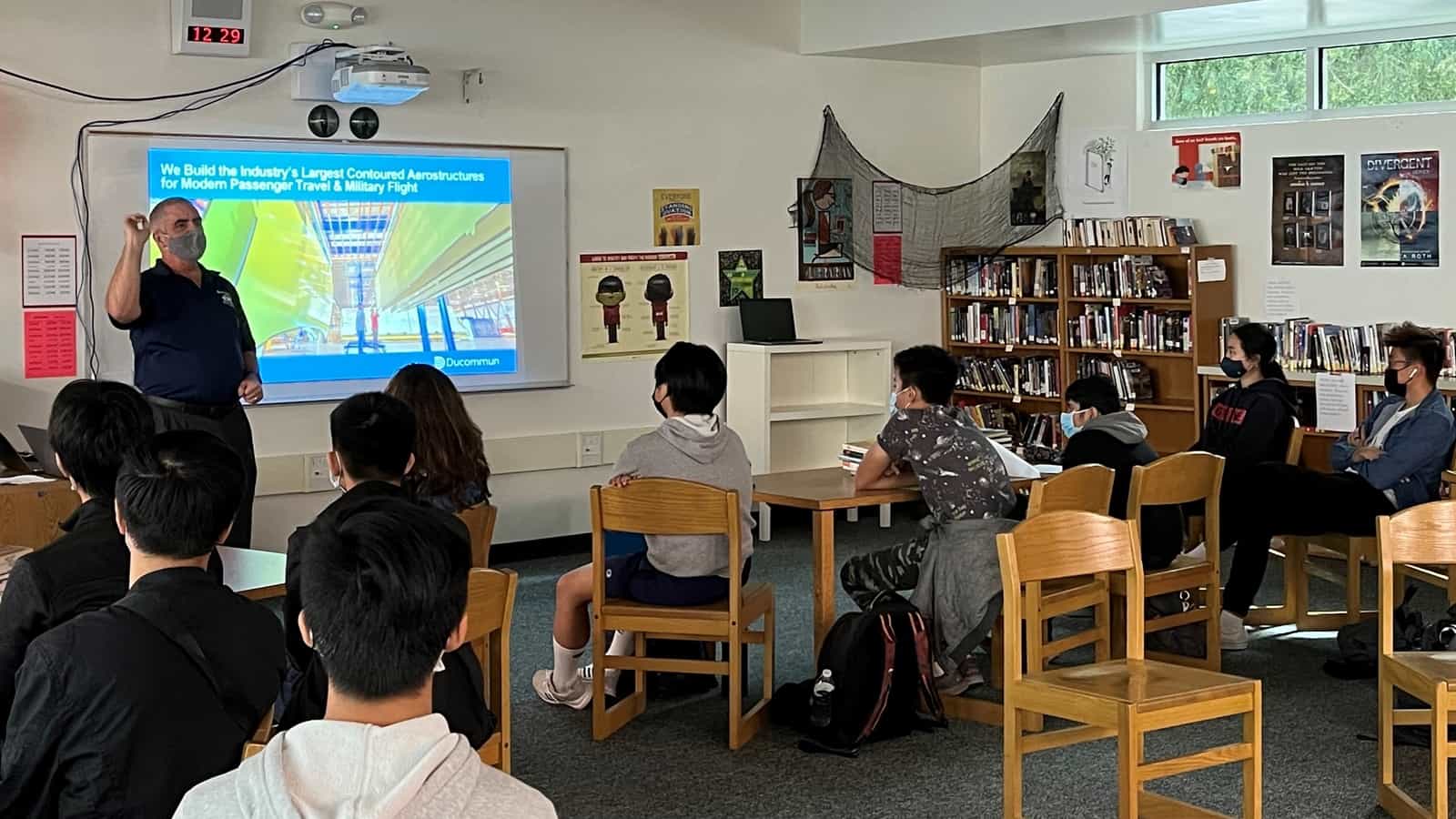
It would have been an impressive feat no matter what, but Ducommun’s achievement of a robust and highly attended MFG Day 2021 was made all the more remarkable by the fact the company had been an NAM member for just nine months.
MFG Day, an annual program of the NAM’s nonprofit workforce development and education partner, The Manufacturing Institute, highlights the opportunities and potential of modern manufacturing careers by encouraging thousands of companies and educational institutions around the nation to open their doors to students, parents, teachers and community leaders.
“As a leader in innovative manufacturing, Ducommun supports National Manufacturing Day, as well as other education and community-based STEM programs and initiatives, that nurture and develop the next generation of creators, builders, technicians and innovators,” said Chonta Salts, Ducommun corporate HR business partner. “Our goal for MFG Day was to engage with students, parents and educators to broaden their understanding of modern manufacturing and to highlight the range of full-time opportunities, internships and part-time summer jobs available to them.”
Their MFG Day: Ducommun, a 172-year-old Santa Ana, California-based provider of technology-driven structural and electronic solutions for the aerospace, defense and industrial markets, coordinated employee and representative visits with 11 high schools and colleges nationwide. Each school is local to one of Ducommun’s U.S. manufacturing performance centers.
- Events were held in person at Ducommun, in classrooms at local schools and online through livestream. Ducommun leadership teams, engineers, technicians and production team members engaged with students about what a career in modern manufacturing is really like—and how much room it offers for professional growth and advancement.
- “Employees shared their own success stories: starting out in entry-level production positions, completing training programs to advance to technical, engineering or other professional positions and what they do in their current role,” said Ducommun Vice President and Chief Human Resources Officer Rose Rogers. “I think that’s a key component of rolling it out. You have to engage with students at their level. By having our employees connect with the students, they were able to ask questions directly to our employees.”
What they did: Ducommun’s MFG Day success was bolstered by the fact that the company has long been involved in sponsoring local-school science, technology, engineering and math (STEM) activities. So come October, it already had many connections at nearby schools.
- Ducommun team members attended the virtual training sessions offered on the MFG Day section of creatorswanted.org,Salts said.
- Using the site’s resources page, Salts worked with the company’s communications team to transform their standardized presentation into one for high school audiences that could be easily customized by HR leaders responsible for local events.
- Rogers and Salts “got buy-in and feedback from senior leadership” early in the planning process.
- They ensured their events were dynamic, interactive and interesting to the students because “we didn’t want to sit them in a conference room, watch a presentation and wish they were back at school!” Rogers said, with a laugh.
Facts and figures: Ducommun started its MFG Day planning “months” in advance, Salts said, and the work paid off. Here are some of the specific results:
- More than 500 students attended and participated in Ducommun’s MFG Day events.
- There were five in-school presentations by Ducommun team members.
- The day included 17 student presentations.
- There were six onsite visits by students to Ducommun performance centers.
- The day had one virtual presentation.
The payoff: Ducommun’s participation in MFG Day is part of its commitment to build the next generation of creators and innovators, Salts said. Though it’s still too early for the company to have reaped the workforce rewards of its autumn outreach, Rogers said it has received a great deal of interest from students about full- and part-time jobs after graduation. Ducommun expects to fill many open positions in late spring and summer 2022.
- “We invested in MFG Day because one of our core beliefs and commitments is to support the communities where we live and work,” Rogers said. “We emphasized that working at Ducommun wasn’t going to be just a job—this could be a long-term play for students because they can build a career with us. Being able to engage with them was invaluable.”
For more information on MFG Day and how to host a successful one next year, visit www.creatorswanted.org/resources/.
Parts Life, Inc. Family of Companies Builds Employee Homeownership

At the Parts Life, Inc. family of companies (Parts Life, Inc.; DeVal Life Cycle Support, LLC; and LC Engineers), they’re not just working to solve product obsolescence, they’re also making it possible for employees to put down roots in their community.
The company, based in Moorestown, New Jersey, works with all military branches, original equipment manufacturers and prime contractors in aerospace and defense to manufacture critical components that extend the life of mission-critical assets. Through a novel initiative, Parts Life also offers loans to employees to help them buy homes.
How it started: The Help U Buy program, or HUB, was the brainchild of founder and CEO Sam Thevanayagam, who knows just how important a home can be.
- “The primary way that you create capital for yourself is to buy your first home,” said Thevanayagam. “I downsized my first home and bootstrapped Parts Life. I used my home as collateral to fund the acquisition of another company. Most things are funded by using your home as collateral.”
Thevanayagam thought up the program three years ago. After a few conversations with his Human Resources Department, he formalized the initiative and set it in motion.
How it works: The company offers interested employees a forgivable loan, and the employees work it off through service over the course of five years, with no additional responsibilities. According to Thevanayagam, more than 25 people have taken advantage of the program since he created it—including 17 employees in the last year alone.
- “We want every single person who works for us to be part of the American Dream,” said Thevanayagam. “When you own your first home, that sets you up for everything else. It gives you stability.”
The impact: Thevanayagam believes that the culture of a company is critical and that the HUB program speaks to Parts Life’s commitment to its employees. Parts Life also focuses on training designed to strengthen employees’ skill sets. The company frequently fills new positions by promoting from within as a demonstration of its investment in its workers.
- “It’s mutually beneficial, because it’s helping people become more valuable to the organization and themselves,”said Thevanayagam.
The last word: “My purpose is to create an environment where others can meet their God-given potential,” said Thevanayagam. “It’s a CEO’s responsibility to have the right culture. At the end of the day, I’m the bearer of that culture. I help create it, defend it. I take that job very seriously. It’s like gardening; you have to create the environment and make sure you’re working on it carefully so people have chance to grow and bloom.”
A Helicopter Mechanic’s Manufacturing Career Takes Off

Marsalis Leonard didn’t grow up in a gearhead family, but from the beginning of his eight years as a helicopter mechanic in the U.S. Army, he was immersed in a world of skills he would never have anticipated seeking out on his own.
- “The Army was my introduction to mechanics,” said Leonard. “It taught me how different machines and processes work together, but it also taught me how to grasp hands-on knowledge and put it to use.”
A new career: That kind of experience served Leonard well when he transitioned out of the army in 2020. He had considered working in civilian aviation, but the process would have required additional education and a range of specific certificates. For Leonard, more school wasn’t a priority—and when he learned about the Manufacturing Institute’s Heroes MAKE America program at Fort Campbell, Kentucky, it seemed like a perfect opportunity to get started in a new field by putting his existing capabilities to use.
- “I wanted to jump into something with the skills I already had,” said Leonard. “Heroes MAKE America seemed like a great place to enhance my skills and turn them into a new career.”
An immersive program: The MI—the workforce development and education partner of the NAM—designed Heroes MAKE America as an integrated certification and career-readiness training program that helps prepare transitioning service members, veterans, National Guard members, reservists and military spouses for careers in manufacturing. The initiative offers in-person trainings and remote training options, as well as career support and placement. So far, the program has a 90% placement rate with graduates in 42 states across the country.
A learning opportunity: While Leonard brought plenty of his own experience to the table, Heroes MAKE America still offered valuable information and practical training in industrial maintenance that he continues to use today.
- “It was very enlightening,” said Leonard. “Heroes gave you an education in basic electronics, pneumatics, hydraulics and mechanics. It taught you to read schematics and diagrams, which was probably the first thing I was able to grasp. It was very hands-on.”
A new path: Through his experience in Heroes, Leonard was hired as a maintenance technician at a Waxahachie, Texas, facility owned by Georgia-Pacific—a pulp and paper manufacturer based in Atlanta, Georgia. While the role may be different from his experience in the military, the Heroes program prepared him to take on his new challenges.
- “I learned an insane amount,” said Leonard. “At first, it seemed overwhelming the amount I didn’t know. But I also was able to see people who have been in the industry for years—and they started out as kids with no experience. So, you work hard, pay attention, ask questions and learn from your mistakes. You’ll learn something—and you’ll use that knowledge.”
Get involved: Want to support Heroes MAKE America? Click here to learn more.
ABB Apprentices Join the Next Generation of Manufacturers
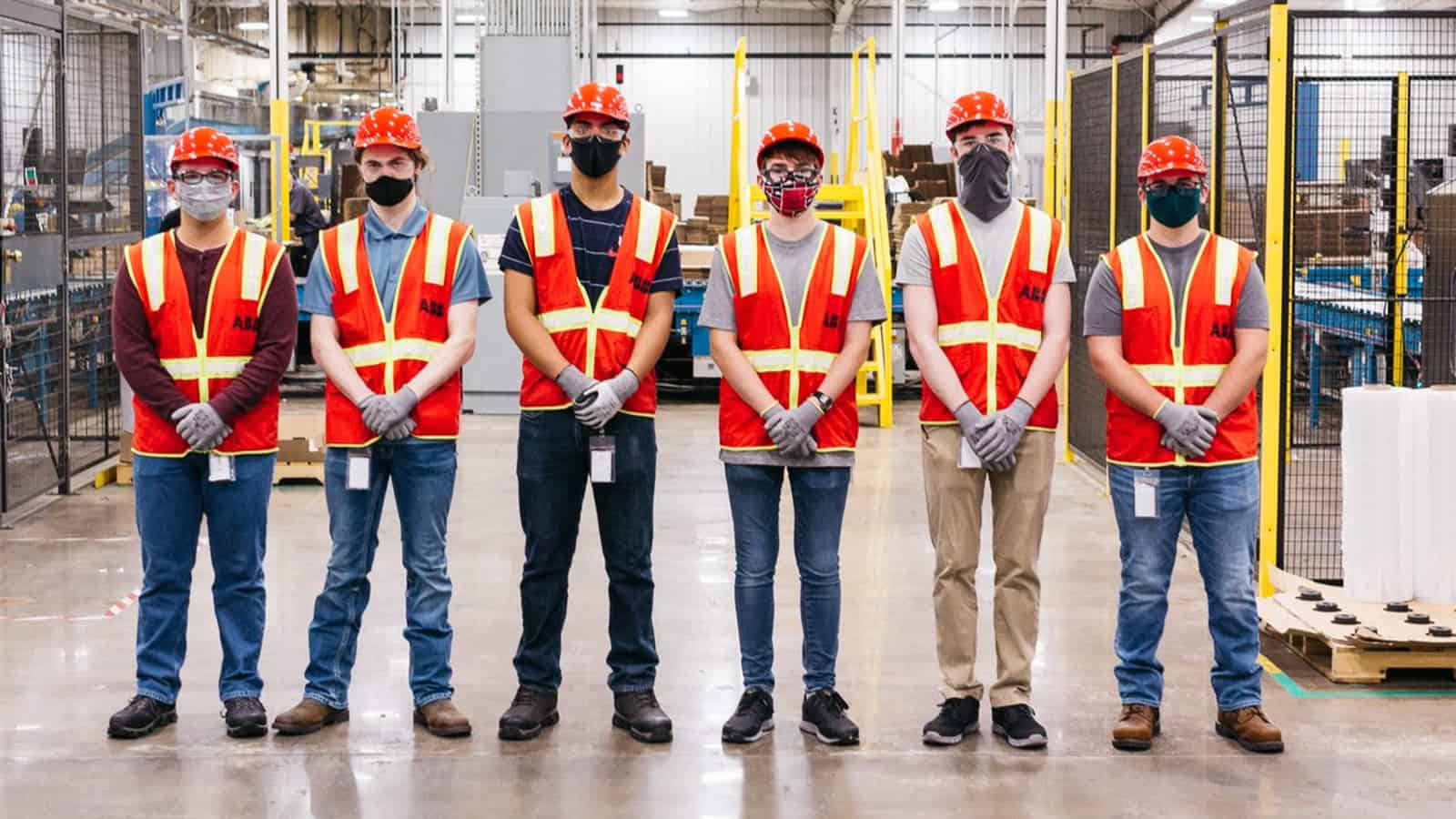
As manufacturers work to fill the skills gap and hire more employees, some are modernizing a tried-and-true approach: taking on apprentices. In Fort Smith, Arkansas, ABB—an industrial electric motor and robotics manufacturer—is leading the way with its innovative program for local high school students.
How it works: Apprentices work three hours per day, four days per week during the school year and then 40 hours per week during the summer. ABB trains them in a range of roles to provide them with a strong foundation in manufacturing skills and the ability to work their way into an advanced technician role.
A win-win: “These students are getting paid, and paid well for a part-time job,” said ABB Vice President of Operations Johnny McKusker. “They learn a variety of skills that most juniors and seniors in high school aren’t exposed to. And if they decide they like manufacturing and want to stay on, then we’re getting a person who joined us early, has had a lot of training and investment and is able to contribute at a high level early in their career.”
What comes next: Last year, nearly all of ABB’s apprentices took on permanent roles within the company after graduating. They were also able to continue their education through a local university, with ABB providing tuition reimbursement to help them pay for it.
A pitch for manufacturing: “Manufacturing as a career has changed significantly in the last 25 years,” said McKusker. “It’s not hot, dirty and dangerous work. Instead, it offers technical skill development and an opportunity to earn a good living.”
The experience: According to at least one participant in the program, the apprenticeship has been an excellent way to learn important skills and gain experience in a real work environment.
- “My experience has been great,” said Nadia, a current apprentice working on the digital solutions team. “It’s given me the opportunity to learn about manufacturing, but also about bonding and building relationships with my colleagues. I’m getting the experience of what a real job would be like outside of school.”
The last word: “I want to continue working for this company,” said Nadia. “I took this apprenticeship because ABB was my dream job from the start, because of how great they are in industrial engineering. Seeing the opportunities here and seeing how they take care of bonding and relationship building—it’s something I really like and appreciate.”
“You Guys Rock”: Creators Wanted Inspires Dallas/Fort Worth

As the final 2021 stop on the Creators Wanted Tour Live circuit, Dallas/Fort Worth had quite a few expectations to live up to—and live up to them it did.
Big impact: With more than 1,000 students attending events, participating in panel talks and discussions and “racing to the future” in the Creators Wanted immersive experience, the Dallas/Fort Worth visit of the joint NAM/Manufacturing Institute project designed to inspire and educate the next generation of manufacturers had a very large audience—and a receptive one at that.
- “When we first mentioned it to them, they had never heard of Creators Wanted,” said Roberta Woodard, a high school professor at TCC South Collegiate High School in Fort Worth, of her students, who attended the Creators Wanted events. “But they were really excited about obtaining any information that they could to help prepare them for graduation.… These kids have [now] shown a great interest in hopping into the workforce as soon as they graduate.”
A truly hands-on experience: During the four-day tour stop, students, teachers and parents were able to try out numerous activities related to manufacturing, including using the VRTEX virtual reality arc welding training system and piloting drones at the Fort Worth Independent School District’s mobile STEM lab, exploring Vuforia augmented reality by PTC, interacting with displays by, and meeting creators at, Stanley Black & Decker, Cornerstone Building Brands, CRH and Nucor and completing the puzzles and escape-room challenges in the Creators Wanted mobile experience.
The chance to see and feel manufacturing firsthand was a game-changer for many attendees.
- “Sometimes it’s hard to teach students from a textbook, or even from online materials,” said Tuan Tran, professor of career and technical education at TCC South Collegiate High School. “And when they see real people here in front of them, talking to them, it gives them a little bit of a peek into what’s possible in the future.”
Family and money: One of the possibilities when it comes to manufacturing careers is the opportunity to make a very comfortable living, and to do so in an environment that values its employees, panelists told Creators Wanted attendees.
- “Now more than ever we need people in trades, we need people in the manufacturing industry, so manufacturing companies are starting to pay [what] you’re worth,” Oldcastle Infrastructure Plant Manager Brandon Castillo said during a Creators Wanted panel talk and Q&A session, echoing the findings of a recent joint MI–Deloitte study, which found that if the U.S. continues on its current trajectory, the U.S. will have more than 2 million unfilled manufacturing jobs by 2030.
“For me, it allows me the ability to take my kids to Disneyland or Disney World and just do a bunch of family activities that I’m not sure would be afforded to me if I didn’t choose manufacturing.”
- Added Blaire Basham, who is in human resources at Nucor Corporation’s Business Technology division: “We are a family first and a company second. Also, the biggest thing that we love is to make money, because who doesn’t? Money is our motivator.… Family and money, what can be better than that?”
Students had the opportunity to draw insights from not just the exhibitors, but also from Celanese, Specialty Packaging, Georgia-Pacific and the MI’s Heroes MAKE America initiative.
News nods: Texas and national media outlets, including the Fort Worth Business Press, NBC 5 Dallas/Fort Worth, KRLD Morning News 1080, The Dana Show and The Dan Bongino Show covered Creators Wanted Tour Live Dallas/Fort Worth.
Highlights from the stop: Here is a glance at some of the action:
Crowley High School students watch, mesmerized, as they see the laser engraver—and modern technology—help them unlock the next room of the immersive challenge. More than 74% of students who were skeptical about manufacturing left the experience either very or somewhat interested in learning more about manufacturing careers.
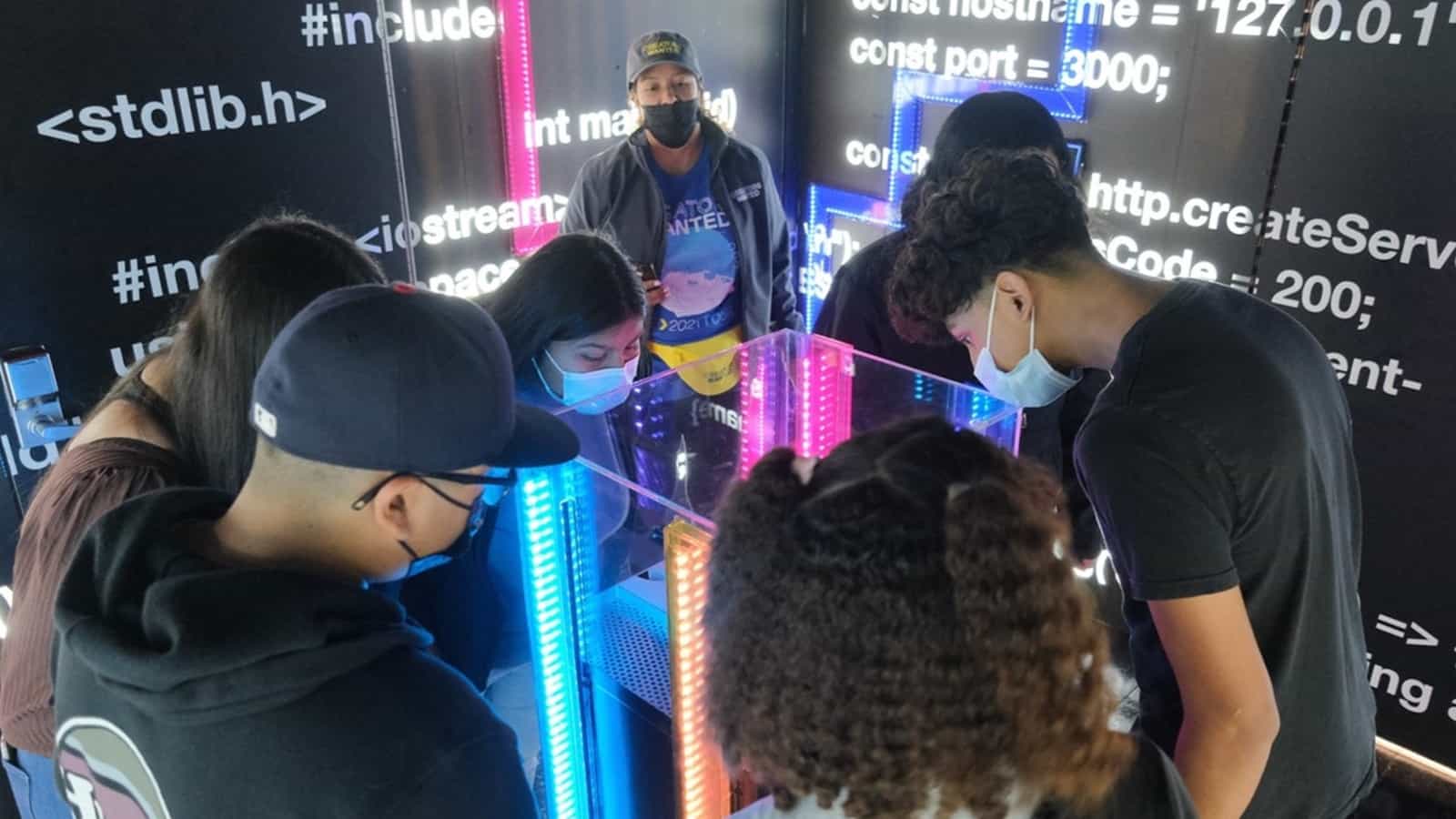
Students from Tarrant County College South hear about the career paths at Stanley Black & Decker.
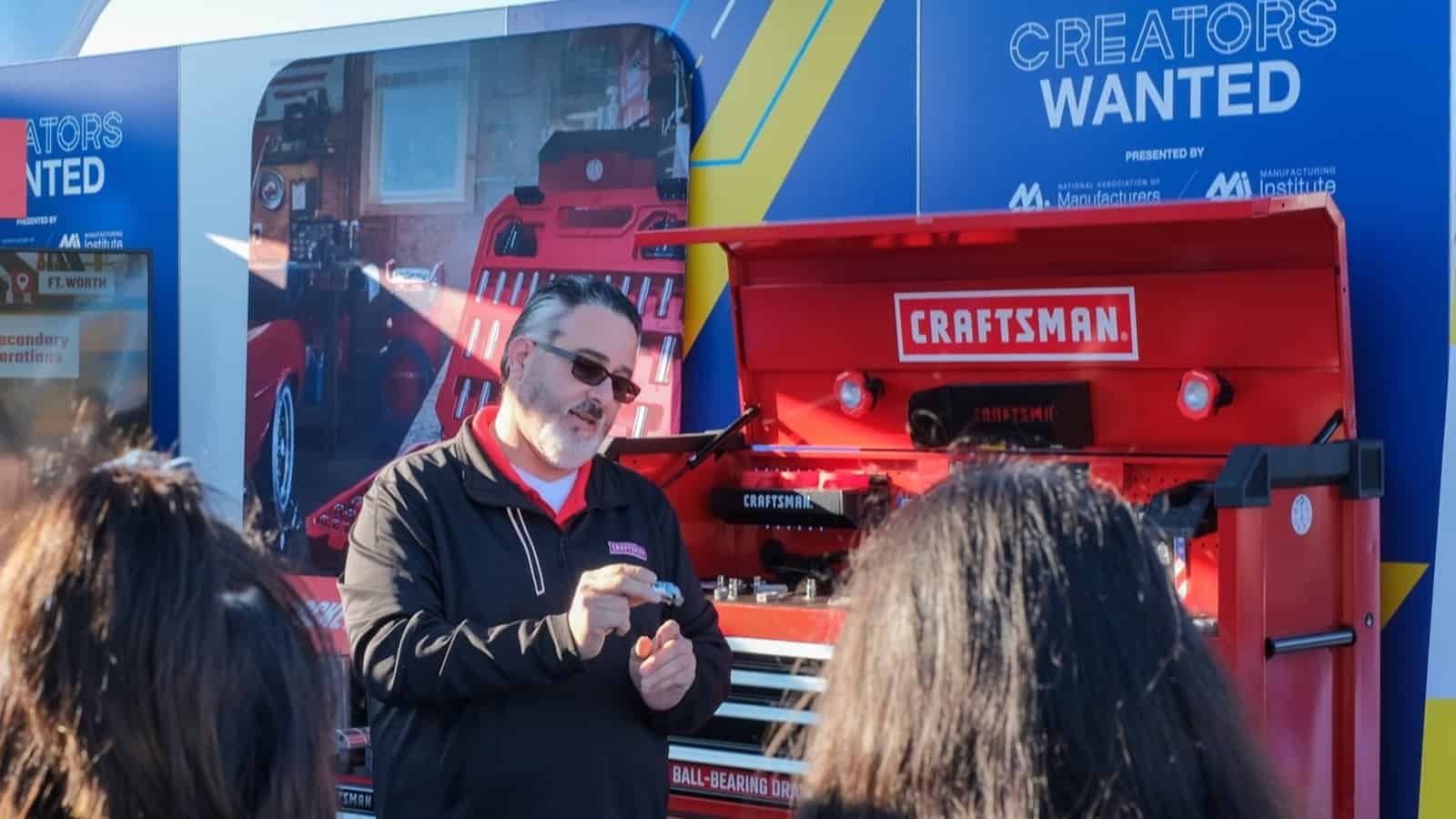
Students from Young Men’s Leadership Academy listen as Khristopher Kuker, plant manager, Dallas U.S. Windows Plant, Cornerstone Building Brands, lays out potential career paths at the company.
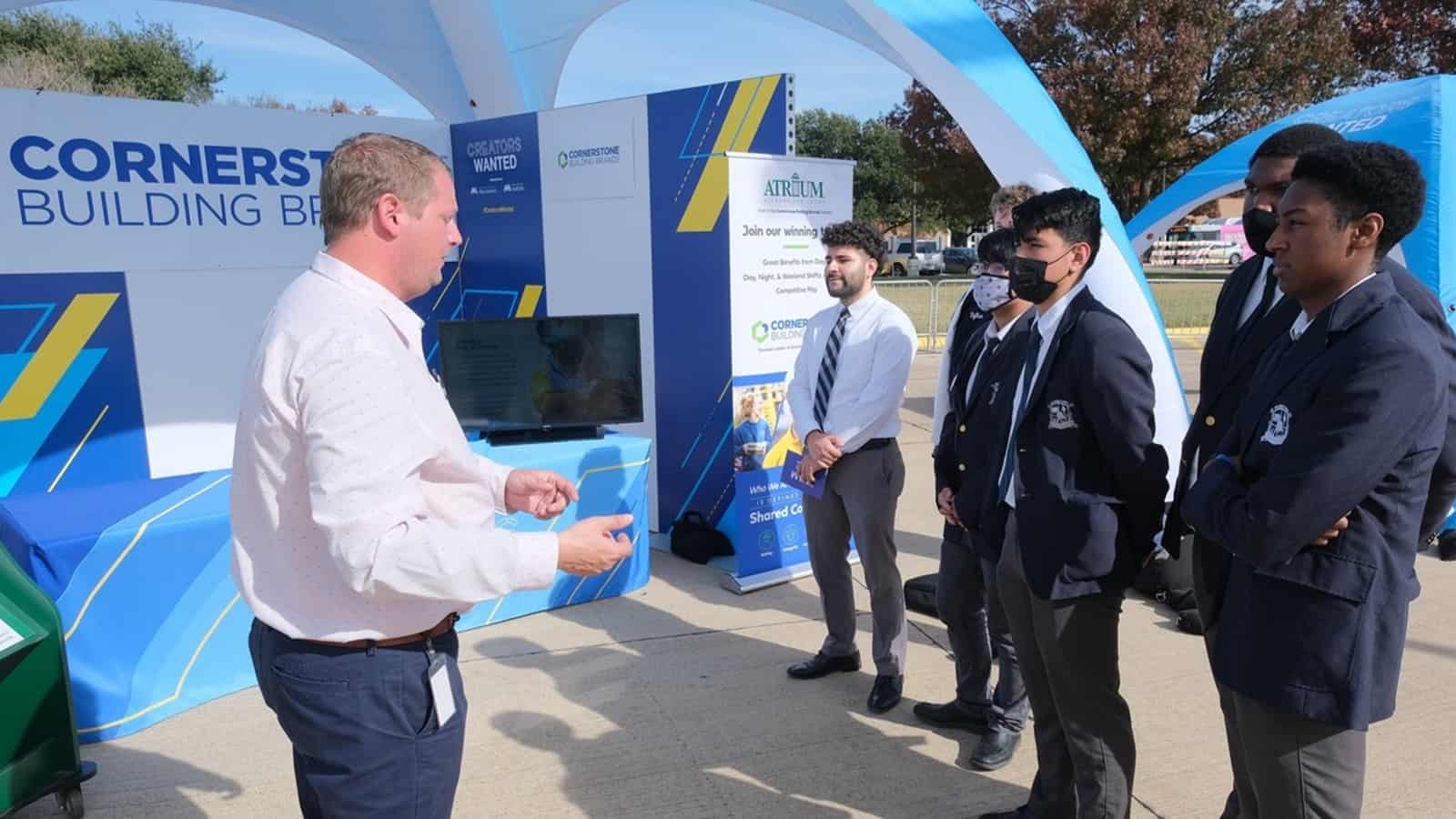
CRH brought crafts to the table, giving students a chance to connect one of its products, Sakrete concrete, with some of the attributes of manufacturing careers.

A student from North Crowley High School reacts to PTC’s augmented reality software.

The race to the future had students working together to correctly identify the Honda vehicle from hints “left” inside the immersive experience from design, engineering and testing Honda associates.
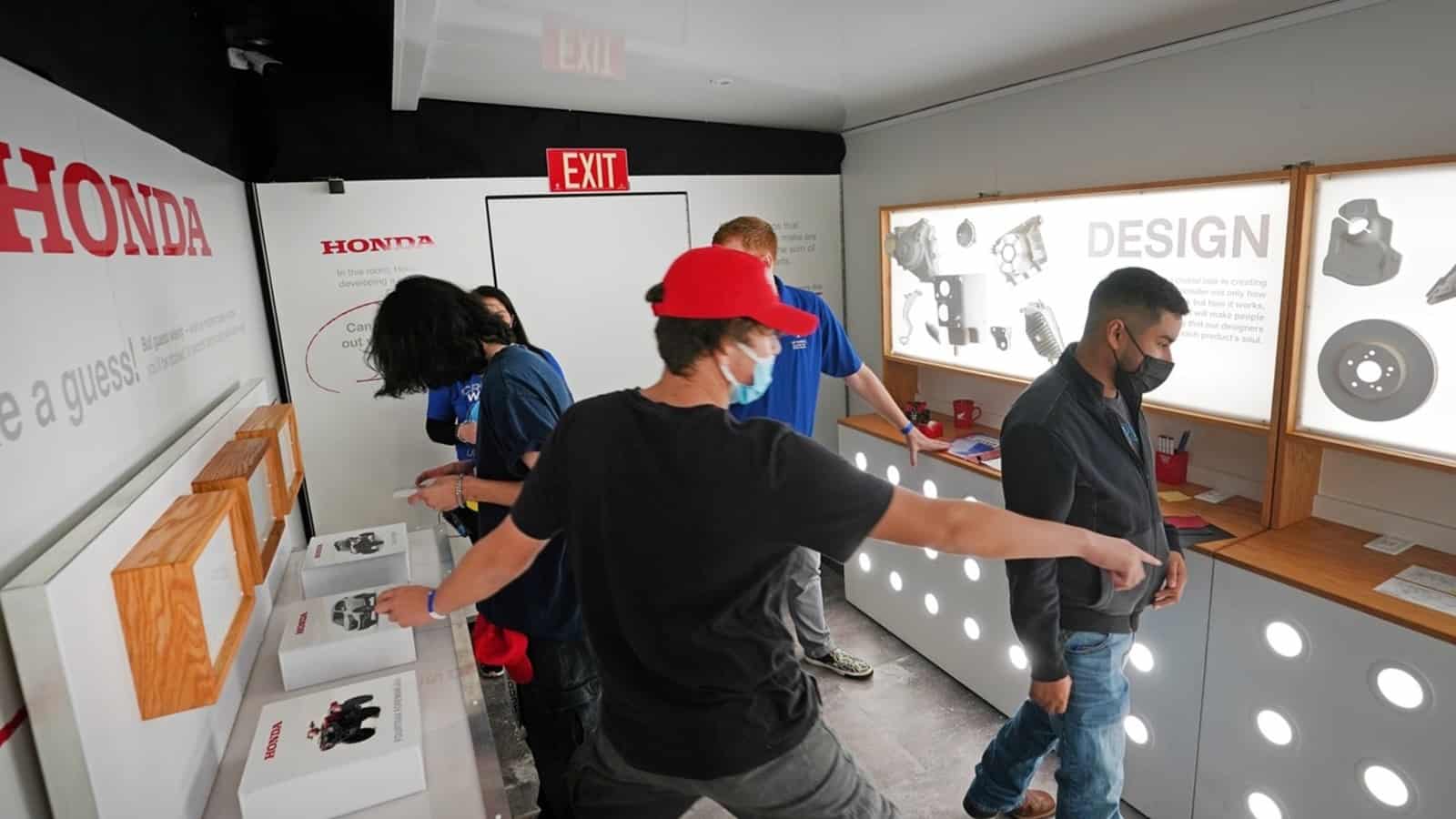
On stage, Specialty Packaging President Hank Dorris and his mentee, Brian Wade, emphasize the importance of mentorship to students at Jacquet Middle School. Dorris, whose company makes products for companies such as Dunkin’ Donuts, Sonic, Chili’s and Wrigley, was personally instrumental in bringing the tour to Fort Worth, marshalling major school districts and key partners to engage as many students as possible.
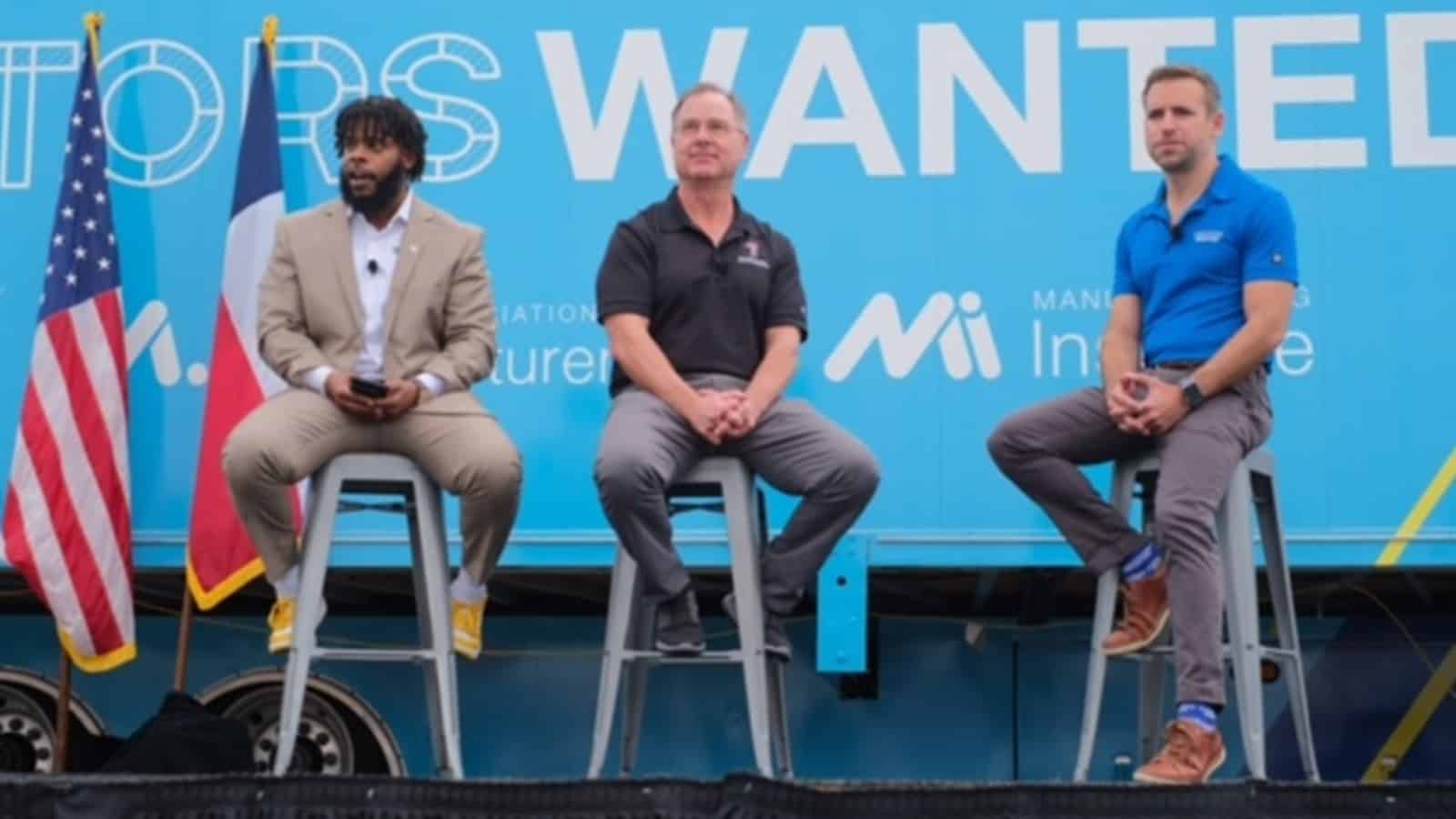
The social media response: School participants, including Tarrant County College and Kennedale Career & Technical Education, tweeted photos of their students learning about manufacturing careers—and having a blast doing it.
TCC has been proud to partner with @FortWorthISD, the @ShopFloorNAM and @TheMfgInstitute to host the Creators Wanted Live Tour. Students have had the chance to interact with manufacturers in entertaining ways during this innovative experience. Learn more: https://t.co/lZBSNd51HD pic.twitter.com/kFDY8Ewfq2
— TarrantCountyCollege (@TCCollege) December 2, 2021
A group of KHS students were able to go and check out #CreatorsWanted today and learn about careers in manufacturing!! #CTE @urkhsprincipal pic.twitter.com/nh7uBCJPMd
— Kennedale Career & Technical Education (@KennedaleCTE) December 3, 2021
The tally: In addition to more than 1,000 students who joined the tour, the tour stop helped Creators Wanted move beyond 153,000 email signups from students and other individuals interested in manufacturing careers and exceed 138 million digital impressions.
The last word: The Creators Wanted Tour Live had such a positive reception it was invited for an encore. Said Woodard: “You guys rock. Come back and see us.”
A Union Pacific Executive Gets Career on Track
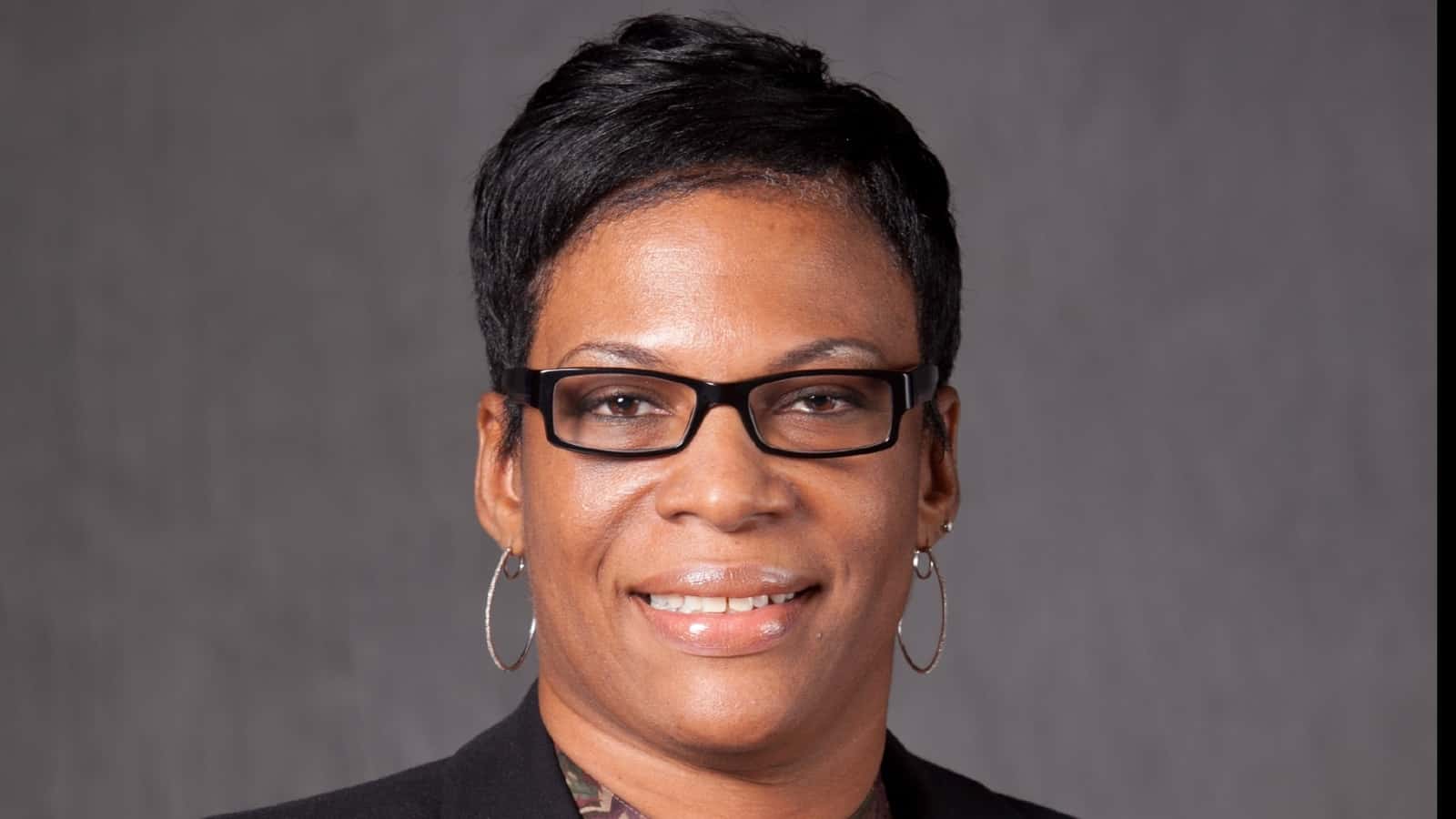
Benita Gibson didn’t set out to join the rail industry, but after 15 years at Union Pacific Railroad and 30 years in management across three different industries, she serves as Union Pacific’s general superintendent for commuter operations in Chicago—and she wouldn’t have it any other way.
A big job: Gibson oversees Union Pacific’s North, Northwest and West Metra Lines. Before the COVID-19 pandemic began, the route carried 194 trains and 100,000 passengers every weekday. While the pandemic has disrupted some passenger rail travel, Gibson continued her focus on making the system work flawlessly, supervising everyone from engineers and conductors, to locomotive and car shops, to ticket agents and Maintenance of Way employees to ensure safe and efficient operations.
A pioneering leader: Gibson is the first Black female operating executive in Union Pacific’s history, but she hopes that the doors she opened will encourage more women and, specifically, more women of color to join her.
- “When I started, you really had to stand your ground and let people know you were part of the team,” said Gibson. “I really just want to be treated equally. My main focus was, I wanted to be able to do what was expected of anyone to do, not just a male or female.”
Opportunity for all: Gibson encourages other women to look for roles in the transportation sector, emphasizing the breadth of opportunities that are available for people interested in being a part of a large and growing industry.
- “We have everything within this company,” said Gibson. “We have marketing and sales, real estate and law, accounting and logistics. People don’t realize all the opportunities there are within a railroad. Every job and career type that’s out there is right here at Union Pacific.”
Now hiring: Union Pacific is also interested in promoting opportunities for women who might not have thought about a career in rail previously—and they’ve got big plans to do it. Through a $3 million, three-year partnership with The Manufacturing Institute—the NAM’s workforce development and education partner—Union Pacific intends to double the number of women in its workforce within the next 10 years. The initiative that works in tandem with Creators Wanted is called Careers on Track and is designed to inspire more women and youth to pursue modern industry careers through workforce development and career solutions. It includes:
- A digital STEM curriculum;
- A virtual STEM experience allowing participants to explore interactive 3D models of facilities and locomotives;
- A STEM micro-grant program for young people; and
- A digital campaign that demystifies career opportunities for underserved women.
The last word: “Being a young female getting into this career is exciting,” said Gibson. “It offers great pay, great camaraderie and the chance to learn a lot. You have an opportunity to see a lot of different places within the 23 states where we operate. Our motto is ‘Building America,’ and that’s exactly what you get to do.”
